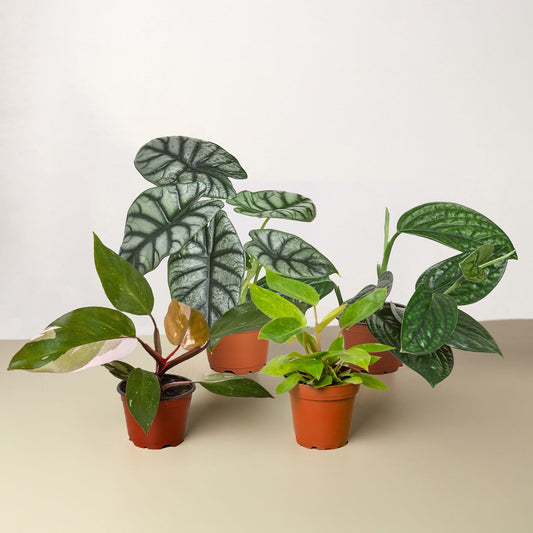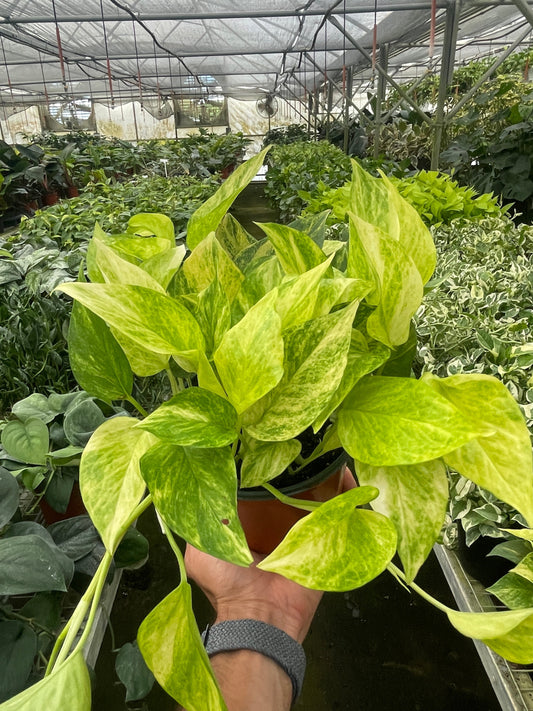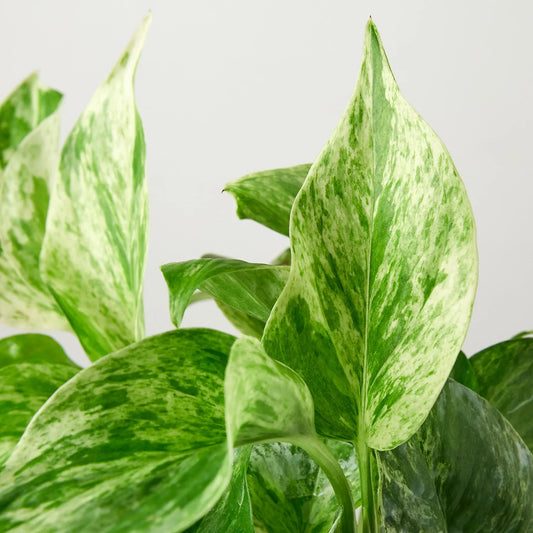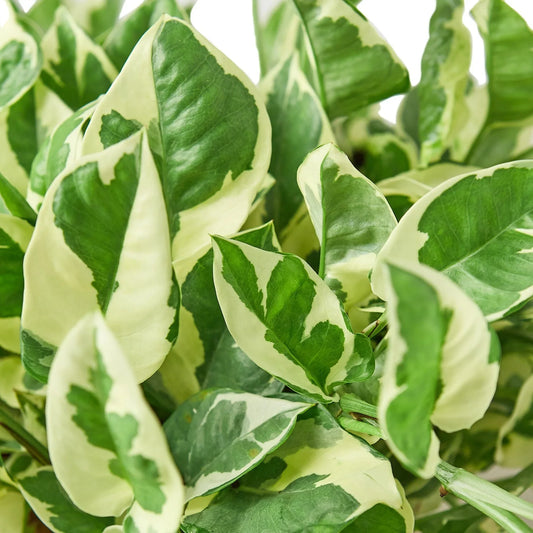How Much Light Does a Red Anthurium Need?
Cafe Planta Team
Have you ever wondered how much light your red anthurium really needs to thrive? You're not alone! These striking plants are a favorite among plant lovers for their bold, vibrant blooms and glossy leaves. But getting their lighting just right can seem a bit tricky.
In this article, we'll explore everything you need to know about the light requirements of red anthuriums. From understanding their natural habitat to practical tips for positioning them in your home, we'll cover it all. So, grab your favorite beverage, and let's get started!
Understanding the Natural Habitat of Red Anthuriums
To truly understand what your anthurium needs, it helps to look at where they come from. Red anthuriums hail from the tropical rainforests of Central and South America. Picture dense canopies where sunlight is filtered through layers of foliage, creating a dappled light effect. This is the kind of environment your anthurium is used to.
In these natural settings, anthuriums grow as epiphytes or ground-level plants, often clinging to tree trunks or nestled among other vegetation. The light they receive is indirect, and too much direct sunlight can actually harm them. If you think about it, they're a bit like us when we forget sunscreen at the beach—exposed and at risk of getting scorched!
Understanding this natural habitat helps us replicate similar conditions in our homes. While your living room might not be a rainforest, knowing your plant's origins gives you a good starting point for its care.
What Is Indirect Light, Anyway?
You might hear plant people talking a lot about "indirect light," but what does that really mean? Essentially, indirect light refers to sunlight that doesn't hit the plant directly. Think of the gentle glow of a sunbeam that's bounced off a wall or filtered through a sheer curtain.
For indoor plants like the red anthurium, indirect light is often just right. Here's how you can identify it:
- Bright, but not direct: The area is well-lit, but you can't see the sun itself from where the plant sits.
- Minimal shadows: If your hand casts a faint, soft shadow when placed in the light, that's a good sign of indirect light.
- Avoid direct sun: If there's a risk of the plant getting sunburned, it's too much direct light.
So, when you're setting up your anthurium's new home, consider these points. A bright room with plenty of natural light, but no harsh sunbeams, is ideal.
Finding the Perfect Spot in Your Home
Now that you know your anthurium's light preferences, it's time to find the perfect spot in your home. This can vary depending on your window directions and the layout of your space. Here's a quick guide to help you out:
- North-facing windows: These usually provide the softest, most consistent light, making them a great option for anthuriums. Even though north-facing windows don't get direct sunlight, they still offer a bright enough environment.
- East-facing windows: Morning light is gentle and perfect for anthuriums, so placing your plant near an east-facing window can work well. Just make sure it's not directly in the sun's path.
- South-facing windows: These can be tricky, as they tend to get the most intense sunlight throughout the day. If this is your only option, consider using a sheer curtain to diffuse the light.
- West-facing windows: Afternoon sun is strong, so be cautious. Again, a curtain or a slightly recessed spot can help reduce direct exposure.
Remember, trial and error are part of the process. You might need to move your anthurium around a bit until you find its sweet spot.
Signs Your Anthurium Is Getting Too Much Light
One of the biggest mistakes plant parents make is giving their anthuriums too much light. This can happen easily, especially if you're trying to provide them with enough brightness. But how can you tell if your plant is getting too much sun?
Here are some telltale signs:
- Yellowing leaves: If your anthurium's leaves start to turn yellow, it could be a sign of light stress. This is particularly true if the yellowing is happening on the side facing the light source.
- Brown, crispy edges: When leaves develop brown, dry edges, it's often a result of scorching from excessive light.
- Faded flowers: The vibrant red blooms of your anthurium might lose their color if exposed to too much light.
If you notice any of these signs, try moving your plant to a spot with less direct exposure. It might take a week or two, but your anthurium should recover and return to its former glory.
Signs Your Anthurium Needs More Light
On the flip side, not giving your anthurium enough light is also a common issue. Plants need light for photosynthesis, which is how they produce the energy to grow and bloom. So, what are the red flags that your plant needs more light?
- Slow growth: If your anthurium isn't growing as quickly as it used to, or if new growth seems stunted, it might need more illumination.
- Fewer flowers: Anthuriums are known for their beautiful blooms, and a lack of flowers can indicate insufficient light.
- Pale or dull leaves: Leaves that lose their rich green hue can be a sign of low light levels.
If you suspect your anthurium needs more light, try moving it closer to a window or providing supplemental lighting. A few adjustments can make a big difference.
Using Artificial Light for Anthuriums
Sometimes natural light just isn't enough, especially during the darker months or if your home lacks bright windows. That's where artificial lights come in handy. But don't worry—setting up a lighting system isn't as complicated as it sounds!
Here are a few tips for using artificial lights with your anthurium:
- Choose the right bulb: LED grow lights are a great option as they are energy-efficient and provide the full spectrum of light that plants need.
- Positioning matters: Place the light source about 12-18 inches above your plant. This mimics the sun's distance and helps prevent overheating.
- Timing is key: Aim for about 12-14 hours of light per day. You can use a timer to automate this process, making it easier to maintain a consistent schedule.
By supplementing natural light with artificial sources, you can ensure your anthurium stays healthy and vibrant all year round.
Seasonal Changes and Your Anthurium
Just like us, plants are affected by the changing seasons. As the days grow shorter in fall and winter, your anthurium might not get as much natural light as it needs. But don't worry—there are ways to help your plant adapt.
Here are some seasonal care tips:
- Rotate your plant: During the darker months, rotate your anthurium every few weeks to ensure all sides get equal light exposure.
- Clean the leaves: Dust can accumulate on your plant's leaves, blocking light. Gently wipe them down with a damp cloth to keep them clean and able to absorb light efficiently.
- Consider supplemental lighting: If needed, use artificial lights to make up for the lack of natural sunlight.
By adjusting your care routine with the seasons, you can keep your anthurium looking its best throughout the year.
Combining Anthuriums with Other Plants
Creating a beautiful plant display is an art, and anthuriums can be a stunning centerpiece. But how do you combine them with other plants while ensuring each one gets the light it needs?
Here are some ideas:
- Layering: Place taller plants behind your anthurium to create depth, while ensuring they don't block the light.
- Complementary plants: Pair your anthurium with other shade-loving plants like ferns or peace lilies for a cohesive look.
- Group by needs: Keep plants with similar light and water requirements together, making it easier to care for them all at once.
With a bit of creativity, you can design a plant arrangement that not only looks great but also meets the needs of each plant.
Experimenting and Observing
The truth is, every home is different, and what works for one plant parent might not work for another. That's why experimenting and observing are crucial parts of caring for your anthurium.
Try different spots and light sources, and pay attention to how your plant responds. Is it growing well? Are the leaves vibrant and healthy? Is it producing flowers? These observations will guide you in making the best decisions for your anthurium's care.
Remember, there's no one-size-fits-all solution. Your home, your plant, and your conditions are unique, and part of the joy of plant parenting is discovering what works for you.
Final Thoughts
Red anthuriums are a delightful addition to any home, and understanding their light needs is key to helping them thrive. By considering their natural habitat, finding the right spot in your home, and being aware of seasonal changes, you can enjoy their vibrant blooms all year long.
At Cafe Planta, we believe that everyone can cultivate their own piece of nature, no matter the size of their space. Whether you're just starting your plant journey or adding to your collection, we're here to help. Feel free to reach out via email or drop us a message on Instagram. Let's grow together!



















